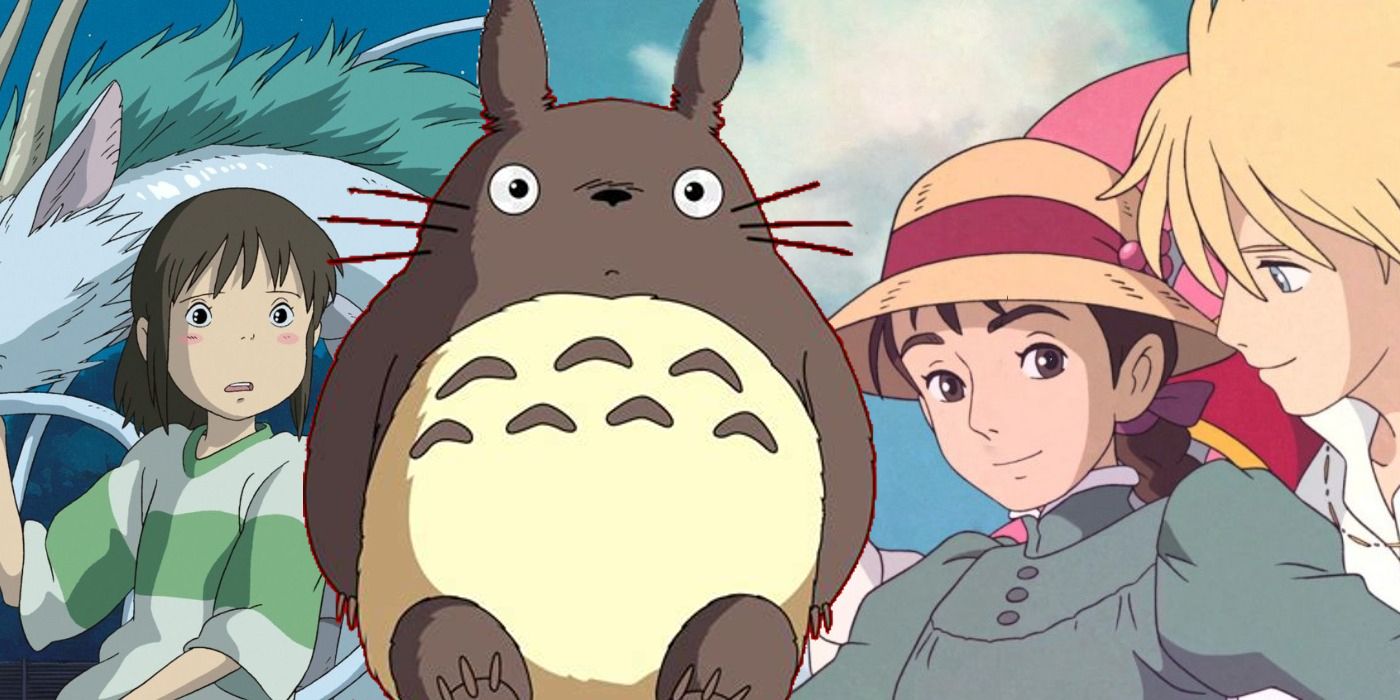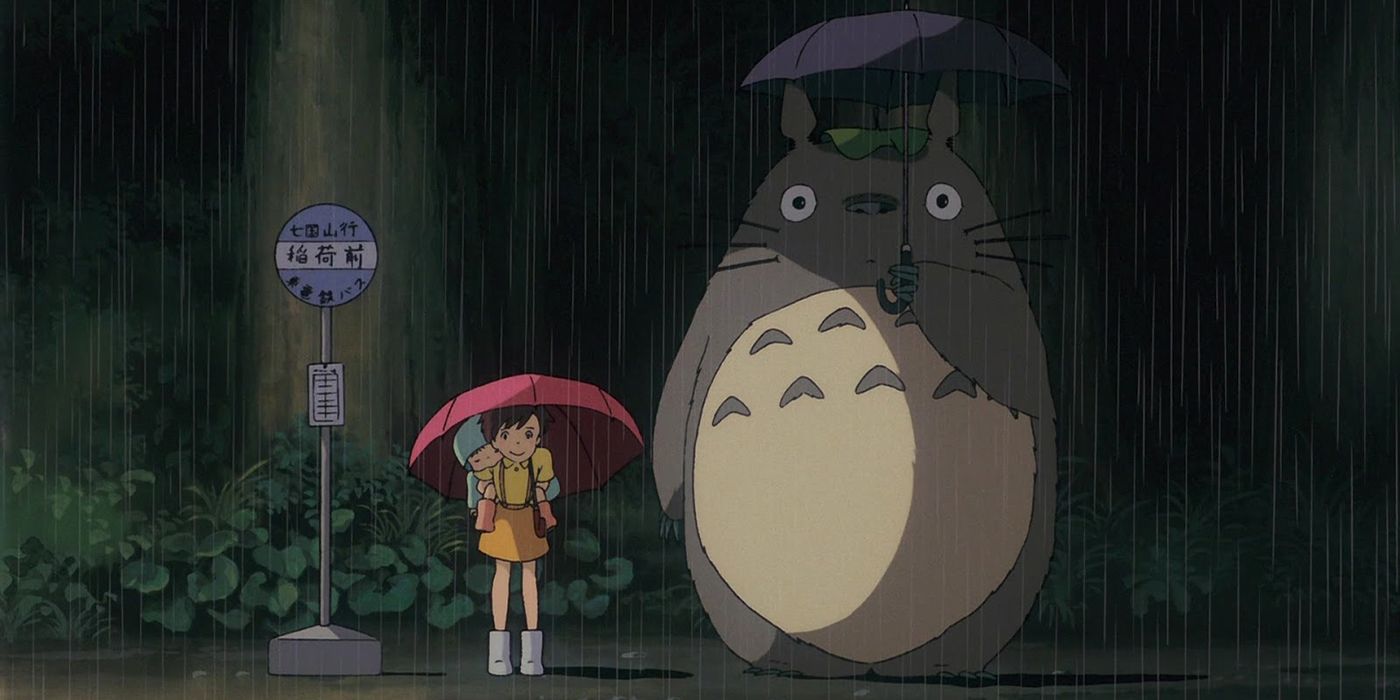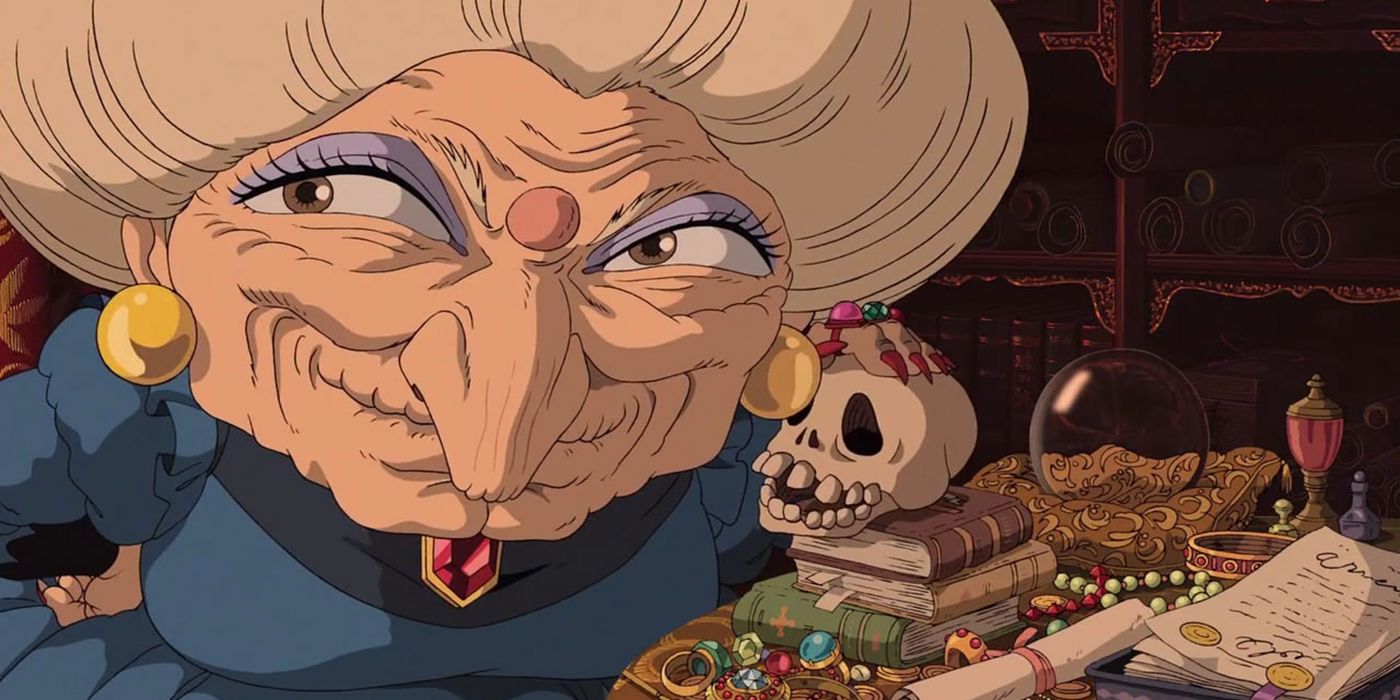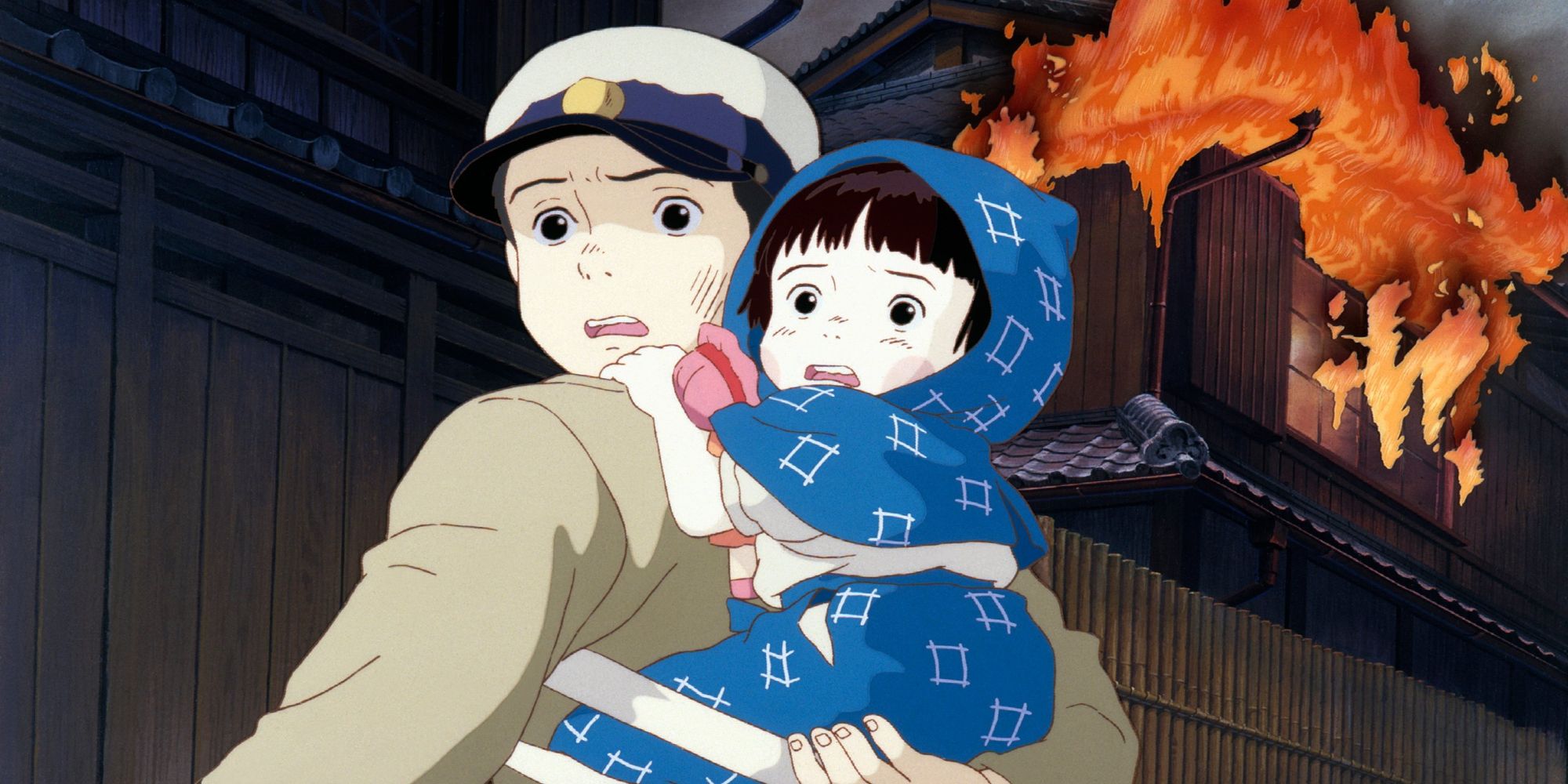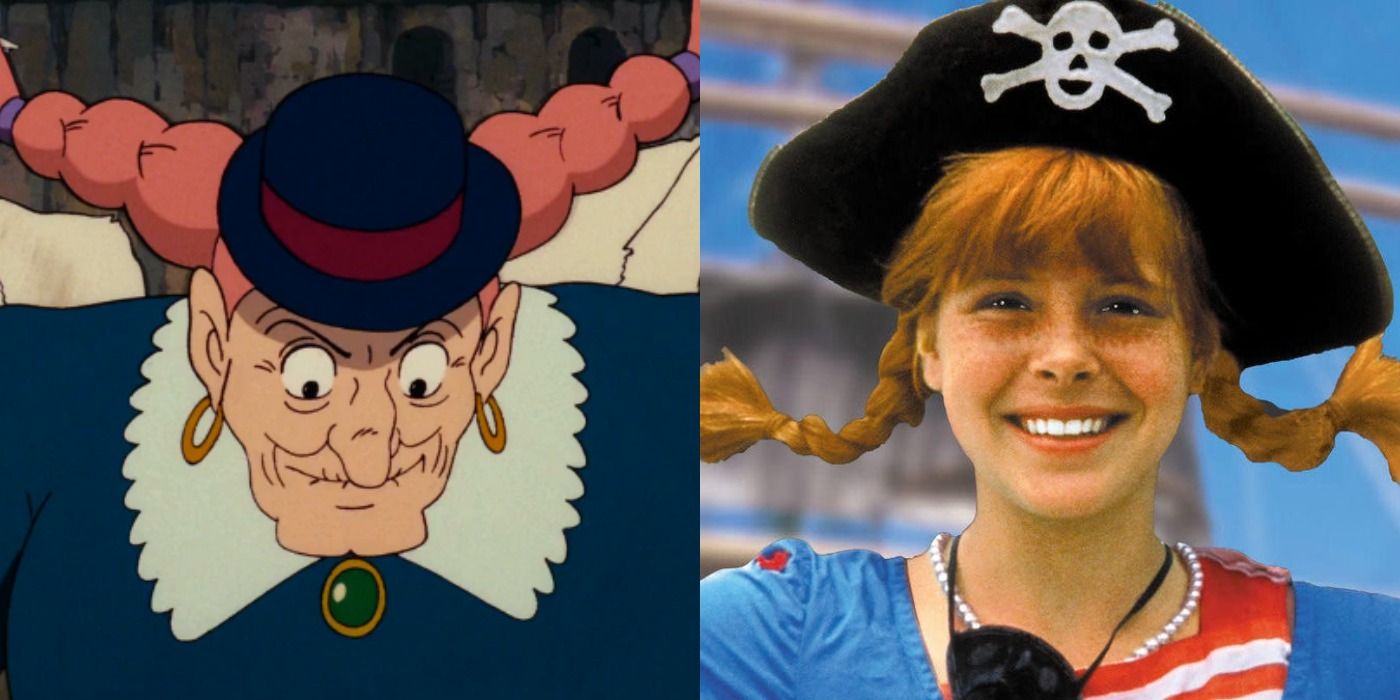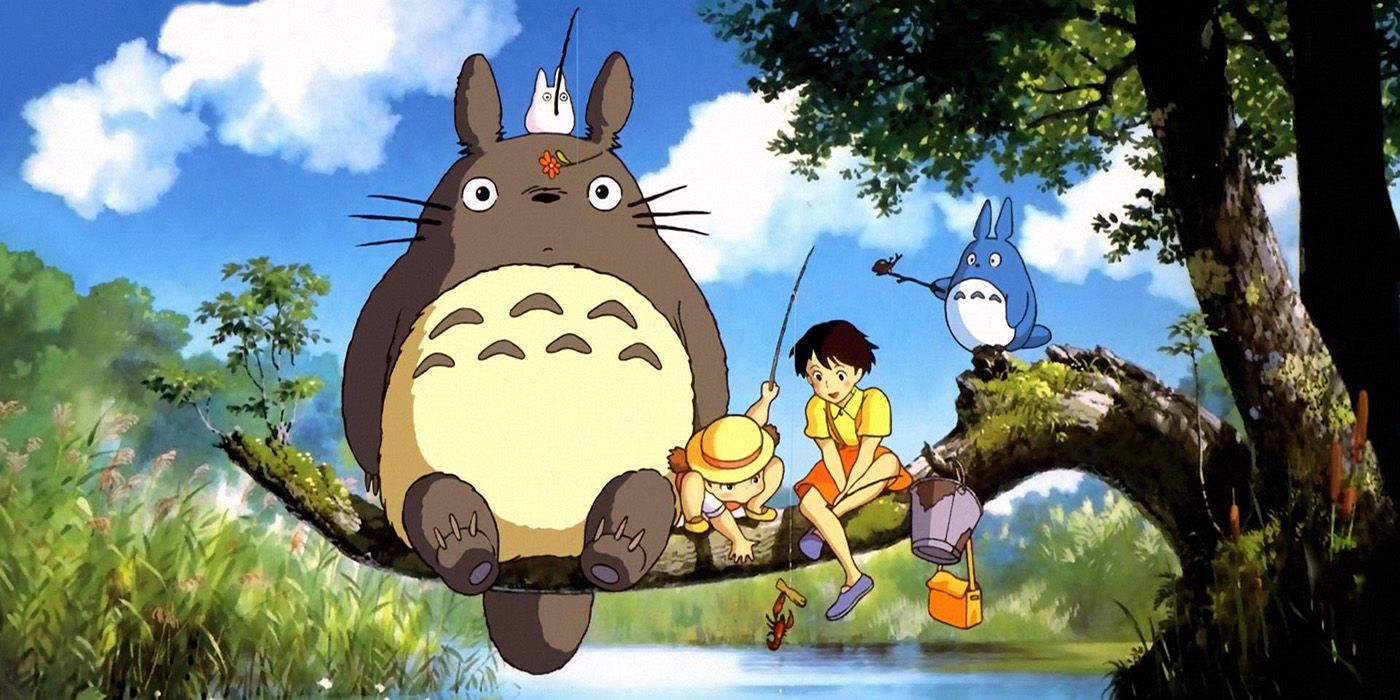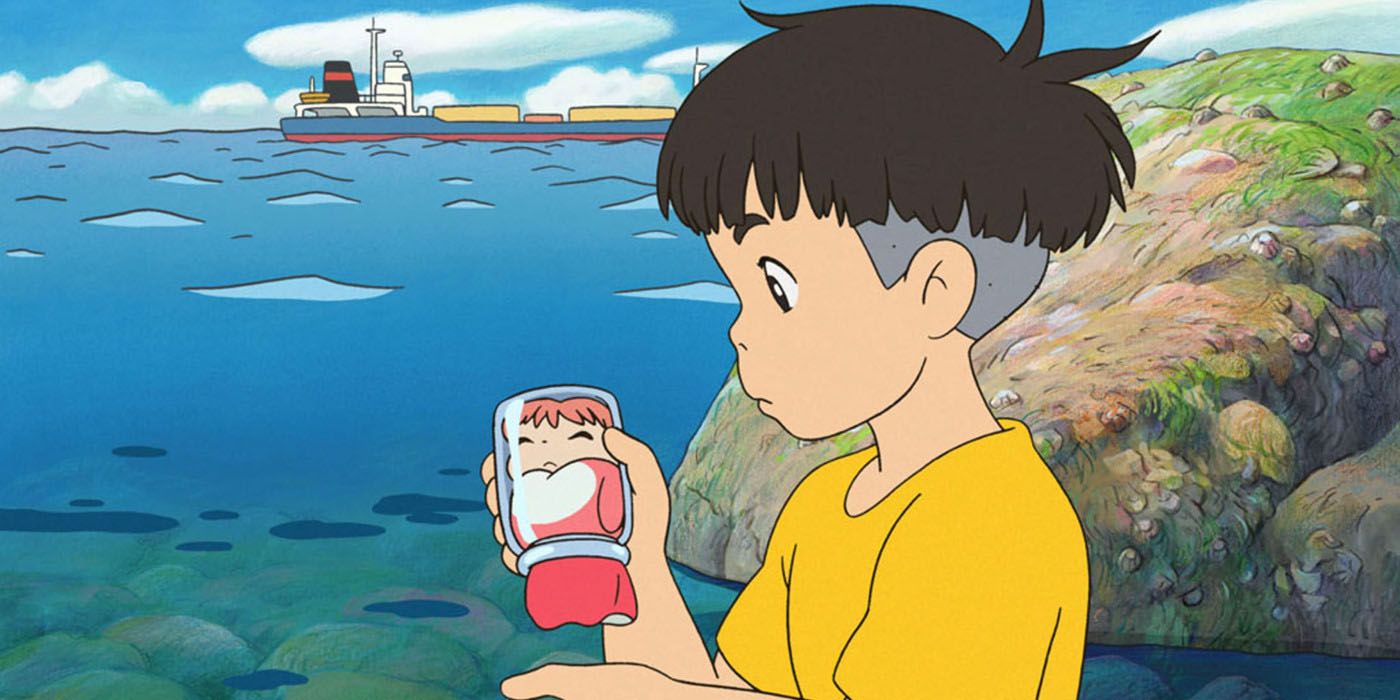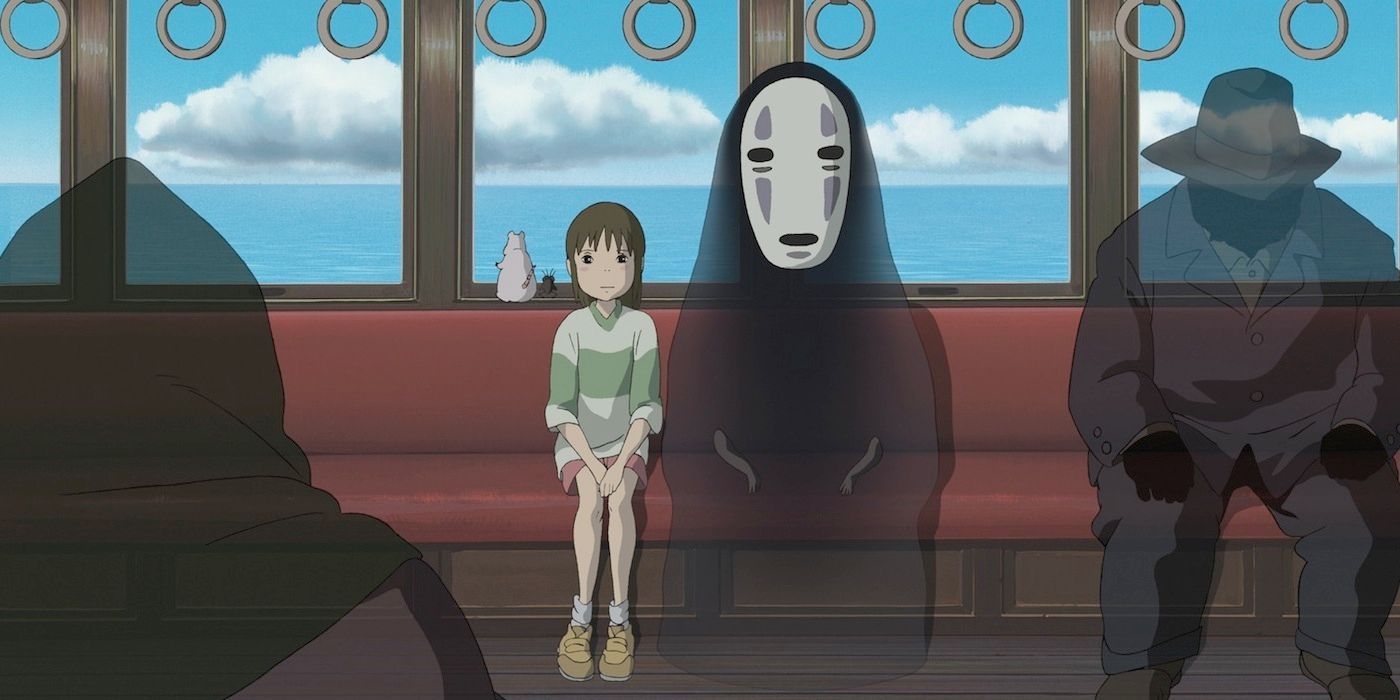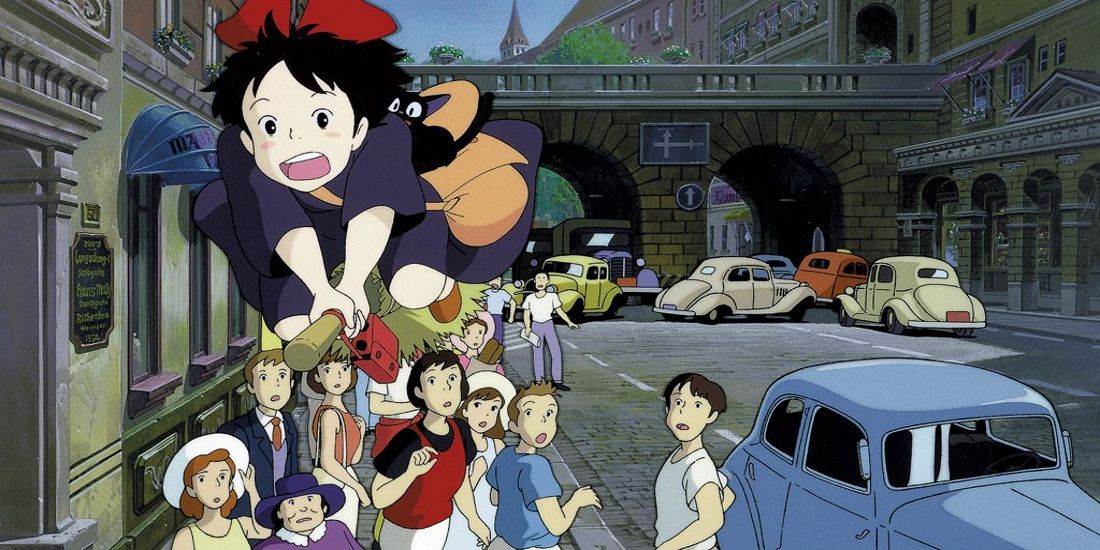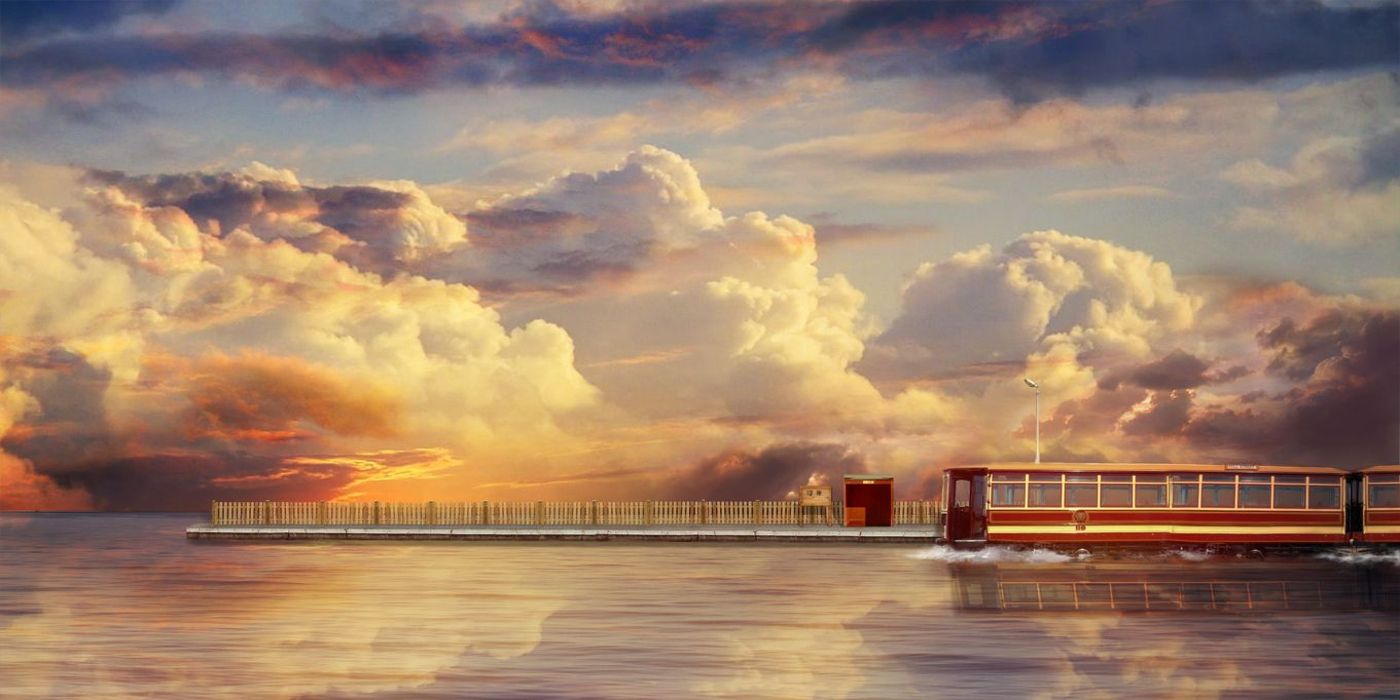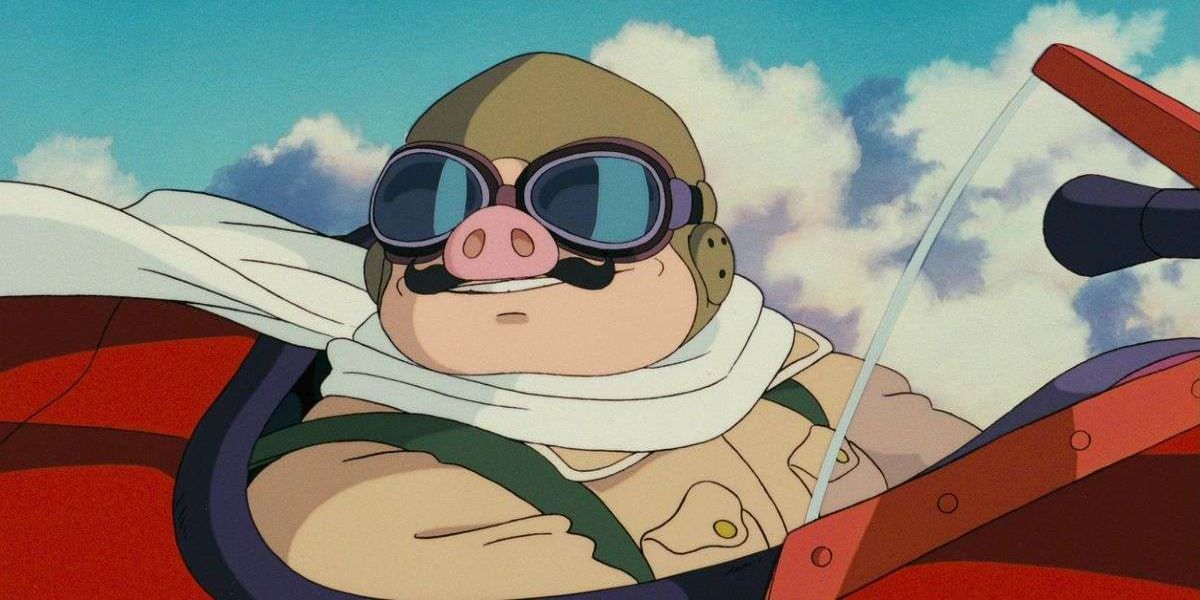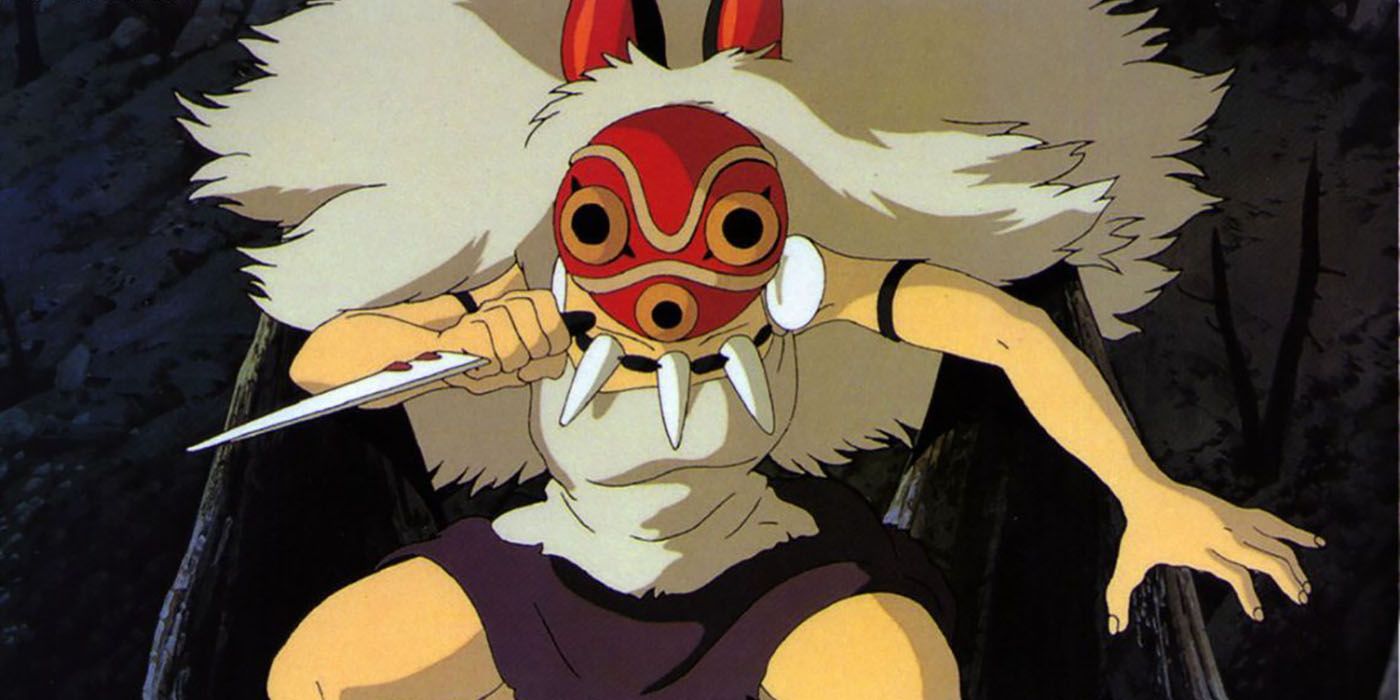Studio Ghibli films have always appealed to both the young and young at heart for their unique storytelling and magical feel-good factor. But, what makes the creations of Studio Ghibli, particularly the works of writer and director Hayao Miyazaki, truly stand out in the world of animation is their complex narratives. From trainee witches to forest spirits, the characters have depth and complexity few movies can match regardless of target demographic. Viewers can watch a Ghibli film time and time again and still not grasp all of its nuances, and, of course, fans love to make up their own stories to fill the gaps.
From subtle suggestions that may allow fans to see certain characters in a new light to grand narrative shifts that shatter expectations and totally transform certain films, these are a selection of shocking—and surprisingly plausible—Studio Ghibli fan theories.
Totoro Is The God Of Death
Set in 1950s Japan, My Neighbour Totoro is the story of young sisters Satsuki and Mei whose father moves them to an old house to be closer to the hospital where their mother is recovering from a long-term illness. The girls quickly discover that their new residence and the surrounding areas are home to friendly forest spirits, particularly a large rabbit-like creature that Mei names Totoro. Towards the end of the movie, Mei goes missing is rescued with the help of Totoro and pals.
Some fans believe the movie is a reference to the Sayama Incident which took place in Japan in 1963 and resulted in a high-profile criminal trial. Supposed links include the fact that the movie is set in Sayama, that the murder that became the crux of the event took place in the month of May and Satsuki's sister's name is Mei, and that one of the stops on the CatBus translates to “Grave Road.”
Yubaba’s Bathhouse Is A Brothel
This doesn't seem like that much of a stretch; those working in the bathhouse seem to primarily be younger women, and Spirited Away's Yubaba is the exact contemptible sort to oversee such operations. Additionally, in Edo period Japan, bathhouses were basically a cover for brothels, and madams of such establishments would sometimes be known as "Yubaba." Yubaba gets Chihiro to sign over her name and become “Sen.” In these real-life bathhouses, it was common for “loose women” to sign over their identities to their madams.
There's also a particularly disturbing scene in which No-Face attempts to lure Sen with gold, a potential nod to the establishment's true purpose. Others have suggested that Yubaba is connected to the Russian folktale of Baba Yaga due in part to the similar names.
Seita And Setsuko Are In Purgatory
Starkly contrasting the outwardly bright and cheery nature of many other Studio Ghibli films, 1988's Grave of the Fireflies is a bleak and horrific depiction of the often-unsung casualties of war. The story deals with the teenage Seita and his younger sister Setsuko who struggle to survive in the final days of World War 2.
In the finale, Seita dies of starvation and is seen joining his sister in some kind of afterlife. However, they then reflect on the events that lead to their deaths, and some fans believe that, rather than passing on, the two are doomed to relive the torturous final days of the war for all eternity.
Dola Is An Elderly Pippi Long Stocking
For those not in the know, Pippi Longstocking is a renowned fictional character originally from Sweden whose popularity has spread throughout Europe and beyond, although she's somewhat lesser-known in the US. These characters are from two very different worlds, but there is an obvious superficial element tying them together in the classic—that being red pigtails.
The core of this theory comes from the fact that Miyazaki actually pitched a feature-length anime based on the book called Pippi Longstocking: The Strongest Girl in the World, but he was denied permission by author Astrid Lindgren. Some stunning concept art from the project, drawn by Miyazaki himself, remains, and it is suggested that Lindgren regretted saying no further down the line.
My Neighbor Totoro Is A Loose Retelling Of Alice In Wonderland
Some fans have suggested that My Neighbour Totoro is an unofficial retelling of Lewis Caroll’s classic tale Alice in Wonderland. Examples include the shapeshifting cat (CatBus), a rabbit (Totoro), anamorphic plants and animals that vanish in a puff of smoke, lots of scurrying down small passageways, and a spunky female protagonist.
However, other fans have pointed out that the story trope of children using the world of fantasy to escape their problems is pretty common and that Ghibli has explored this concept in several of its films including Spirited Away and the video game Ni No Kuni. Miyazaki was most likely influenced by Alice in Wonderland rather than directly paying homage to the book. Still, it’s an interesting perspective.
Ponyo Is An Angel
In the 2008 Ghibli retelling of The Little Mermaid, a goldfish named Ponyo who dreams of becoming a human befriends five-year-old Sosuke after he saves her from being stuck in a glass jar. That seems innocent enough on the surface, but a lot of Japanese viewers are said to have found the movie a bit creepy—and this theory does nothing to help dispel that.
As the theory goes, everyone in Sosuke’s seaside village died in the flood. The boats seen carrying residents after the water levels rise all go in one direction, which some fans believe could be a reference to the Sanzu River, which is the Buddhist equivalent of the River Styx. Tunnels are also a common theme in Ghibli movies, and they often take characters from one world to another. Fans may also have noticed that the characters also come back through this same tunnel when the journey is over. Ponyo and Sosuke go through a tunnel, but they are never seen going back through it, suggesting they went to the afterlife and never came home.
No Face Is Another Human Trapped In The Spirit World
No Face is an enigmatic being who comes across as both terrifying and tragic. However, his strange interest in Chihiro may stem from the fact that the two are more alike than they may seem. Some fans believe that No Face was once human, but he has since turned into a ghost, which may the fate of all humans who spend too long in the spirit world.
While he does seem to have a human-like anatomy and exhibits some distinctly human characteristics, it's impossible to say for sure what No Face is and from where he might have come.
Ponyo And Sosuke Are The Guardians In Kiki’s Delivery Service
Some eagle-eyed fans have noticed that Mr. and Mrs. Osono, Kiki’s guardians in Kiki’s Delivery Service, look an awful lot like adult versions of Ponyo and Sosuke. Could it be that the no-longer-a-fish-Ponyo and Sosuke remain close as they’re growing up, eventually fall into real, adult love, and get married? Then, further down the line, the duo opens a bakery and adopts trainee witch Kiki and her cat.
However, other fans have pointed out that Kiki’s Delivery Service was released in 1989, long before 2008’s Ponyo. So, for this to be true, it would take some serious foreshadowing on Miyazaki’s part. Still, stranger things have happened in the world of Studio Ghibli.
San Wears Her Sister’s Corpse in Princess Mononoke
In Princess Mononoke, San is raised by wolves after her own parents abandon her while running away from the wolf goddess Moro. At least, that's what Moro says, or in her own words: "I caught her human parents defiling the forest. They threw their baby at my feet as they ran away." Sounds like San is better off without them.
On another note, it's hard to miss San's fetching coat, which she wears to blend in with her wolf brethren. But, where did she get the fur for it? If one fan theory is correct, the story of San's origin is far more sinister. Rather than "defiling the forest," this theory suggests that San's parents were hunting Moro's pups, killing one of her babies. When she caught the poachers, she put an end to them, but spared San, replacing her lost pup with the human child. To help her feel more at home, Moro gave San the fur of her deceased baby. So, San is essentially wearing the corpse of her dead sibling...
Setsuko Appears In Spirited Away
When Chihiro and No Face depart via train to visit Yubaba's twin sister Zeniba, a platform crowded with spirits in transit is briefly seen. One small, shadowy figure remains unmoving, however, and many believe this to be Setsuko, who is waiting for her brother to arrive.
As tragic as it seems, this fits very well with the ending of Grave of the Fireflies. Seita dies on a train platform very similar to the one seen in Spirited Away, and it's not inconceivable that these two transit hubs would share some kind of spiritual link.
All Studio Ghibli Films Are Connected
It's not hard to imagine that a selection of films as whimsical as those produced by Studio Ghibli are all connected in some way. After all, if Pixar and Quentin Tarantino can do it, then Miyazaki and co. certainly can. Like Pixar, Ghibli hides plenty of Easter eggs throughout its movies, whether it's just a nod or a full-on link to another one of its films. Fans reckon that, when put together, these Easter Eggs create a larger story—one set in the wider Ghibli universe.
One example is the Soot Sprites from My Neighbour Totoro, who also makes an appearance in Spirited Away. Remember the pink shoe that Granny finds in Totoro that she mistakes for Mei's? Well, it turns out that it may be Chihiro's. Characters pop up too, like a young Pazu from Castle in the Sky hiding in the background of a scene from Howl's Moving Castle and a Totoro book on a shelf in Whisper of the Heart.
The Ghibli Curse
The "Ghibli Curse" or "The Curse of Ghibli" is a theory among Japanese financial traders that Studio Ghibli is somehow hexed and has the potential to damage the stock and currency markets. Apparently, whenever a Ghibli movie airs on TV in the country, it's detrimental to the Japanese economy. It could be anything from a bad report to payroll dates, but investors, traders, and the like all seem to be aware of the curse and pay close attention to TV schedules for this reason.
But, it's not just Japan that has to worry; the effect is supposedly international, with the currencies of other countries known to drop after a Ghibli film spree. One former finance worker even ran the numbers from 2008 to 2013 and found that 28 out of the 35 times a Ghibli movie aired, the currency of either Japan or the US dropped the following day. So, it looks like Ghibli films are so magical that they not only affect the fantasy world but the real one, too.

